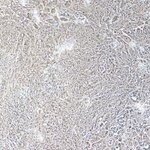Cancer Research

Lifelong exposure to soy genistein, a bioactive component in soy foods, protects against colon cancer by repressing a signal that leads to accelerated growth of cells, polyps, and eventually malignant tumors, according to a new paper.
Chronic exposure to the soy isoflavone genistein reduced the number of pre-cancerous lesions in the colons of laboratory rats exposed to a carcinogen by 40 percent and reduced Wnt signaling to normal levels.
In the study, researchers modeled lifetime exposure to soy by feeding pregnant rats and their offspring a diet containing soy protein isolate and a diet…

Omega-3 fatty acids, contained in oily fish such as salmon and trout, selectively inhibit growth and induce cell death in early and late-stage oral and skin cancers, according to a new paper.
Omega-3 polyunsaturated fatty acids cannot be made by humans in large quantities and so we must acquire them from our diet and in vitro tests showed that they induced cell death in malignant and pre-malignant cells at doses which did not affect normal cells, suggesting they have the potential to be used in both the treatment and prevention of certain skin and oral cancers.
The authors were…

Removing ovaries during hysterectomies protects against future risk of ovarian cancer but the ovaries and the hormones they produce may have advantages for preventing heart disease, hip fracture, sexual dysfunction, and cognitive decline. Outside cancer risk, the most important factor that should determine ovarian conservation vs. removal is her age- whether she is older or younger than 50 - according to a review article published in Journal of Women's Health.
Women have a choice between ovarian conservation or removal but wide variations in recommendations, and therefore practice patterns,…

Cancer occurs most often in adults because it often takes decades of accumulating genetic errors for a tumor to develop - pediatric tumors are another issue.
Recently, researchers may have found a missing piece of the pediatric cancer puzzle; a mechanism behind the early development of some pediatric solid tumors.
In healthy cells, a checkpoint prompts the cell to repair damaged DNA before it replicates. Many researchers believe that cancer cells flourish when these checkpoints are skipped or inhibited, as the mutated cells can survive and rapidly reproduce. A growing collection of damaged…

Chemotherapy, the treatment of cancer using chemotherapeutic agents such as cytotoxic antineoplastic drugs, is one of the primary treatments for cancer - but it has drawbacks. Some of the most disturbing findings of recent studies of cancer survivors is the apparent prevalence of chemotherapy-associated adverse neurological effects, including vascular complications, seizures, mood disorders, cognitive dysfunctions, and peripheral neuropathies.
In addition, chemotherapy triggers changes in ion channels on dorsal root ganglia and dorsal horn neurons that generate secondary changes…

A potential new pathway to treat cancer is actually called the Hippo pathway - and it's a key control in how our organs are perfectly suited to our bodies, despite differences in size.
Using mice genetically lacking an enzyme called Set7, the results show that methylation of a protein called Yap is critical for the function of the Hippo pathway. Loss of the Set7 enzyme resulted in cell growth and larger organs.
"So why don't we have miniature whales or gigantic bats? It turns out that there are specific pathways that tell cells when to grow and when to stop," says…

Brain cancer is the primary cause of cancer mortality in children but even when the cancer is cured, the stress of treatment can be harmful to developing brains.
The search is always on for gentler cures and the PedBrain consortium, launched in 2010, has published the results of the first 96 genome analyses of pilocytic astrocytomas.
Pilocytic astrocytomas are the most common childhood brain tumors. They usually grow very slowly and are often difficult to access by surgery and cannot be completely removed, which means that they can recur. The disease may thus become chronic and…

Hydrogen sulfide, the pungent-smelling gas produced by rotten eggs, is a key player in colon cancer metabolism, and a potential target for therapies for the disease, according to a new paper in the Proceedings of the National Academy of Sciences.
Cell-culture and mouse experiments demonstrated that colon cancer cells produce large amounts of hydrogen sulfide, and depend on the compound for survival and growth.
"They love it and they need it," said University of Texas Medical Branch at Galveston professor Csaba Szabo, co-author of the paper. "Colon cancer cells thrive on this stuff —…

Michael Graner, PhD, a CU Cancer Center investigator and associate professor of neurosurgery at the CU School of Medicine, experimented on his dog.
Before anyone yells "Tesla!" and PETA gets up in arms, he did it for the best of reasons. At age 12, his great dane Star collapsed during a coughing fit and Graner discovered the cause: lung cancer, specifically advanced bronchoalveolar adenocarcinoma with metastasis to the lymph nodes. The prognosis was grim, with a median survival from diagnosis of only about 6-27 days. And Star was well past the age when she could've tolerated…

A promising anti-cancer therapy - suppression of the protein mammalian target Of Rapamycin (mTOR) - has failed to achieve hoped-for success in killing tumor cells.
mTOR plays an important role in regulating how cells process molecular signals from their environment, and it is observed as strongly activated in many solid cancers. Drug-induced suppression of mTOR has until now shown success in causing the death of cancer cells in the outer layers of cancerous tumors, but has been disappointing in clinical trials in dealing with the core of those tumors.
Reduced oxygen supply --…